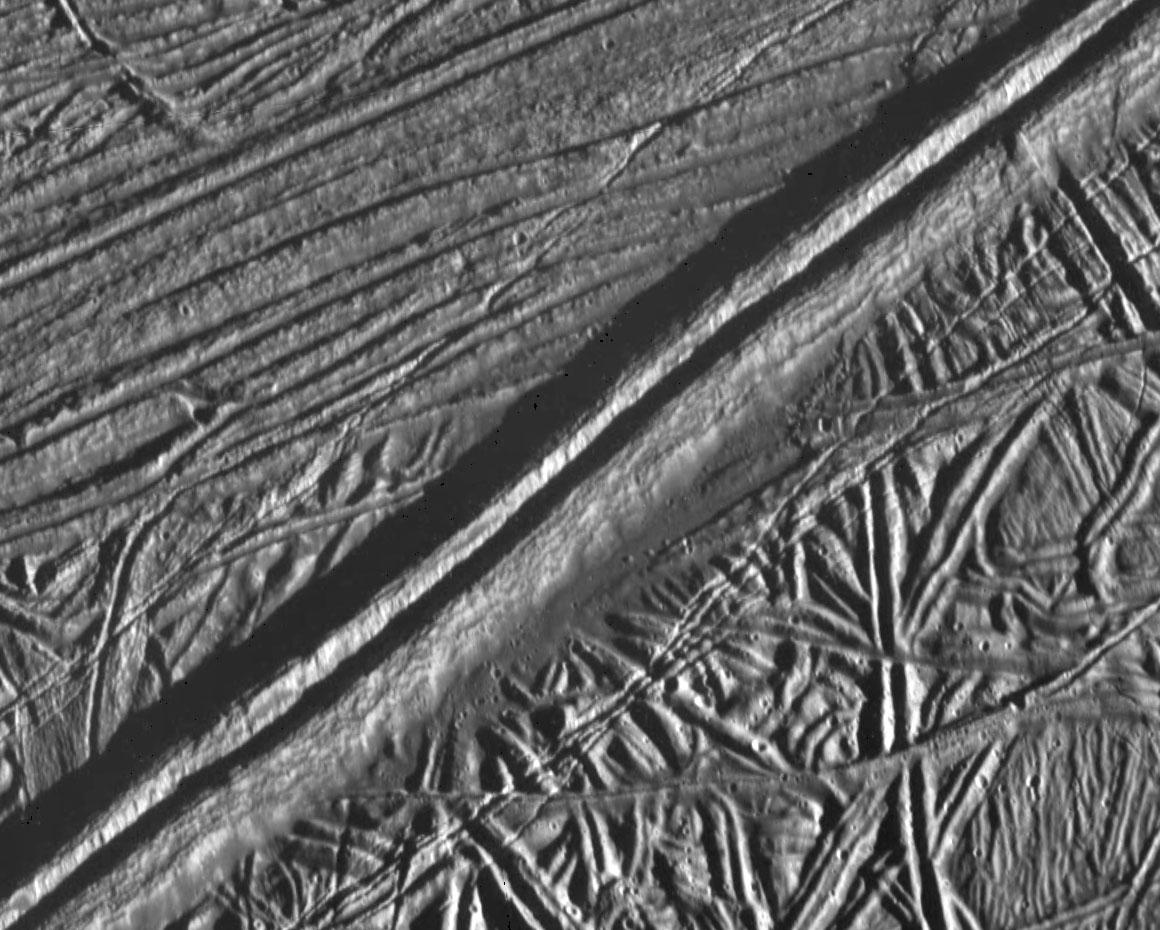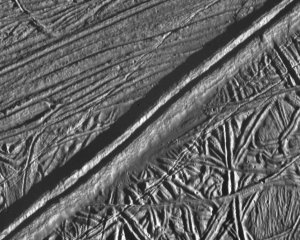
Mosaic of Europa’s Ridges, Craters
This view of the icy surface of Jupiter's moon, Europa, is a mosaic of two pictures taken by the Solid State Imaging system on board the Galileo spacecraft during a close flyby of Europa on Feb. 20, 1997. The pictures were taken from a distance of 1,240 miles (2,000 kilometers ). The area shown is about 8.7 miles by 10.6 miles (14 kilometers by 17 kilometers), and has a resolution of 22 yards (20 meters) per pixel. Illumination is from the right (east). The picture is centered at about 14.8 north latitude, 273.8 west longitude, in Europa's trailing hemisphere. One of the youngest features seen in this area is the double ridge cutting across the picture from the lower left to the upper right. This double ridge is about 1.6 miles (2.6 kilometers) wide and stands some 330 yards (300 meters) high. Small craters are most easily seen in the smooth deposits along the south margin of the prominent double ridge, and in the rugged ridged terrain farther south. The complexly ridged terrain seen here shows that parts of the icy crust of Europa have been modified by intense faulting and disruption, driven by energy from the planet's interior.
- X



























